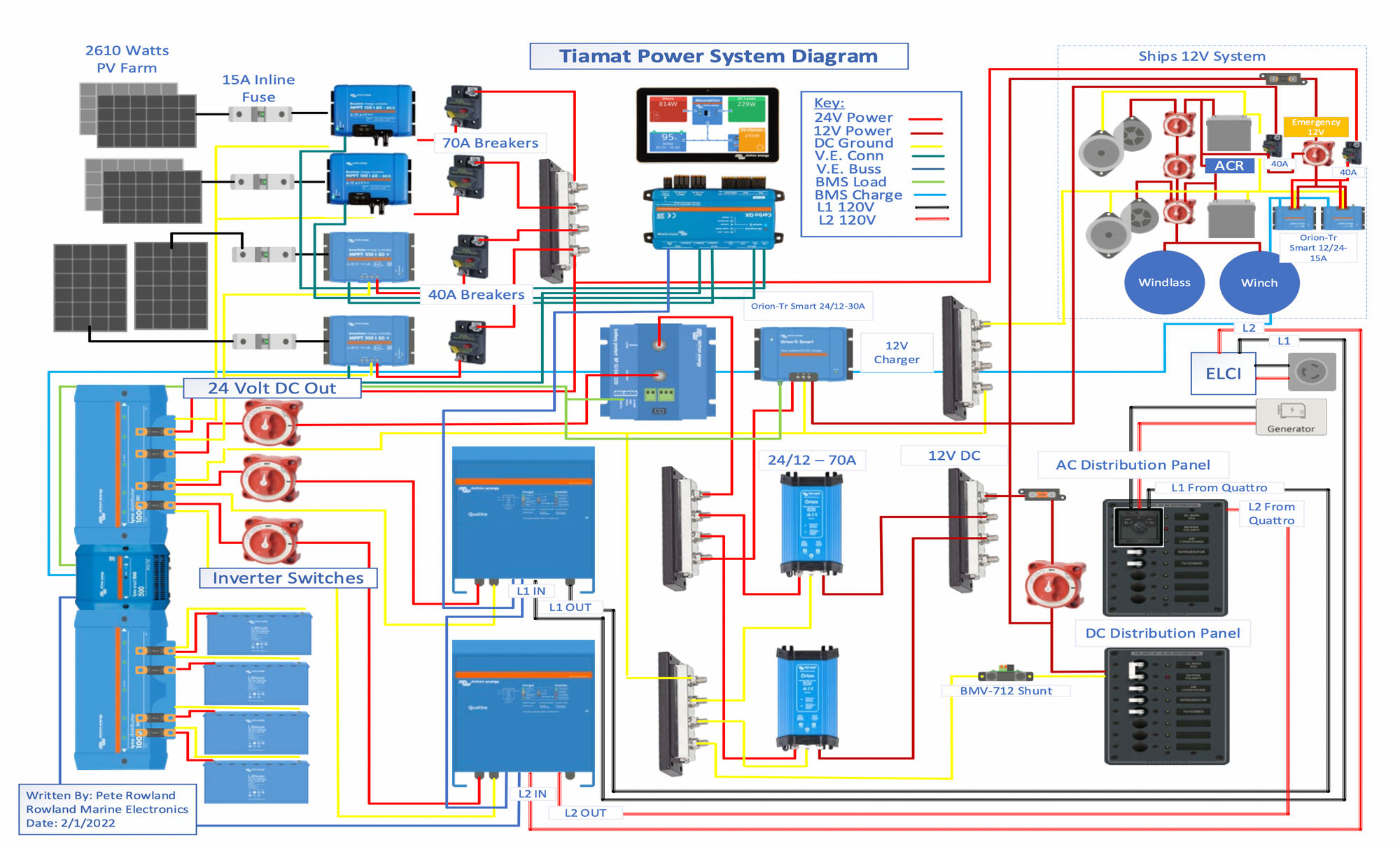Charge, charge, charge!

With all the solar capacity we add to Tiamat, the next step step is to upgrade our electrical system. After all, what's the point in having a lot of solar if you can't use it?
Tiamat is currently configured with 7.1kWh of 12VDC batteries, charged by the the enginer alternators. The original solar panels charge the 12V batteries via a Victron MPPT charge controller.
On the AC side, Tiamat uses two-phase 120/240VAC shore power. She has an inverter/charger attached to the first leg for the two-phase shore power, which is used for all "house" AC power. The second leg is only used for the air conditioning system. Tiamat also has a comically oversized two-phase diesel generator that can be used to run the air conditioners away from the dock.
So much for how it used to be.
With so much power in from the solar panels, we wanted to upgrade the batteries to lithium. Lithium batteries achieve much greater density, have a wider usable capacity, and can accept much greater charging currents. We're installing four Victron 24V 200Ah batteries, for a total capacity of 19.2kWh - and 80% of that is usable capacity, compared to 40% with the AGMs!
You might have noticed that I said 24V batteries. That's right, we're switching Tiamat's energy storage from 12V to 24V. Higher voltages are generally better for higher power systems like we're building, and we had actually looked into going as high as 48V. Unfortunately, while 48V support does seem to be growing, enough of the components we would have needed just weren't available. 24V, while not as optimal as 48V, will still be much better than 12V and is well-supported in the marine industry.
The switch from 12V to 24V for energy storage necessitates a lot of downstream changes, as we're not planning to convert all of our 12V loads to 24V, at least not initially. Supporting this entails a bunch of added complexity in terms of 24V to 12V converters. For our largest loads (windlass, winch), we're also using the 12V start batteries of the engines to help buffer the load.
The other big change we're making is installing a PAIR of 120V inverters, which together will be able to produce the full two-phase 120/240VAC. The obvious benefit of this is that it will enable running our air conditioners off of the batteries (at least for a little while...), but we're also using it to enable installing an induction cooktop in the galley!
